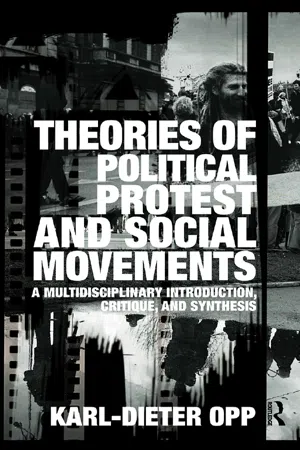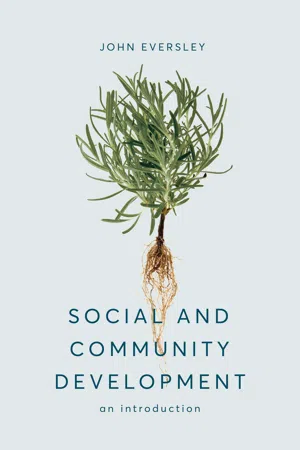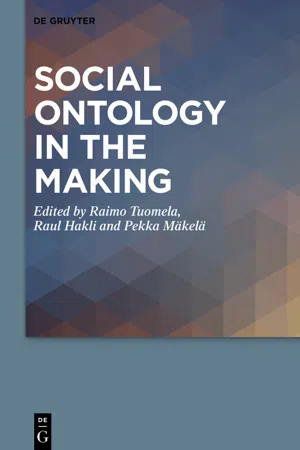Collective Action
Collective action refers to the coordinated effort of a group of individuals to achieve a common goal. In economics, it often involves collective decision-making and cooperation to address shared issues or pursue mutual benefits. This concept is important for understanding how groups can work together to overcome collective action problems and achieve outcomes that benefit the entire group.
5 Key excerpts on "Collective Action"
- eBook - ePub
- Russell Hardin(Author)
- 2015(Publication Date)
- RFF Press(Publisher)
...Their goods need to be collective only in the sense that they are collectively provided. Hence, the notion of public goods might seem irrelevant, and strictly speaking it is. But the problem of collective provision has probably been clarified, although also often confused, by conceiving of the goods that groups seek as public goods. Often it is technically wrong to do so except in some abstract sense. For example, unions seek better pay for their members. Clearly, more money every week for every worker is not a public good in joint supply, because one worker’s wages are available to no other. It is the higher wage rate sought by the union that might be seen as a public good, if, once the rate is established, it benefits all the relevant workers so that one worker’s receipt of the higher rate does not reduce the rate available to others. Olson’s analysis of Collective Action depends not on jointness, but only on the impossibility of exclusion, or more accurately, on the de facto infeasibility of exclusion. For example, if the law says that wage rates in a factory must be uniform for each job category, nonunion workers cannot easily be excluded from enjoying the benefits of union-negotiated wage increases. The central relationship between the analysis of public goods and the problem of Collective Action, then, is that the costliness or de facto infeasibility of exclusion from consumption of a collectively provided good usually eliminates any direct incentive for individual consumers to pay for the good. THE LOGIC OF Collective Action In his simplest statement of the logic of Collective Action, Olson presents the straightforward equation of costs (C), gross benefits (V i) to the individual i, and net benefits (A i) to the individual from i ’s own contribution to a group’s collective good: A i = V i — C. If A i > 0 for some i, the group is privileged and presumably will succeed...
- eBook - ePub
Theories of Political Protest and Social Movements
A Multidisciplinary Introduction, Critique, and Synthesis
- Karl-Dieter Opp(Author)
- 2009(Publication Date)
- Routledge(Publisher)
...Those who consume the public good without contributing to its provision are called free riders. Jointness of supply and rivalness of consumption. “Jointness” of supply means that if the good is available to one member of a group, it is available to all members. Nonetheless, the utility of the good for one person may depend on the number of other persons in a group. In this case, there is rivalness of consumption. For example, in a public park the degree to which a person enjoys the park will normally depend on the number of individuals who are in the park. There is thus rivalness of consumption. Group specificity. It is important to note that a public good is always group specific. External security is a public good only for a given state. Cleanliness of an apartment is a public good only for the tenants who share the apartment. Collective Action. Any contribution to the provision of a public good is, by definition, “Collective Action.” The term “collective” suggests that the action must be carried out by several (i.e. at least two) actors. However, Olson also discusses the special case where only one individual produces the collective good for a group. In the apartment, e.g. only one person may clean it. But this is an extreme case. In general, “collective” refers to contributions of several actors. 4 “Collective Action” is what the theory tries to explain. The question thus is: When do individuals act jointly to contribute to and, thus, provide the public good? Put differently, it is explained when individuals with a common goal act to realize their goal. A group is defined as a collectivity of individuals with a common goal or, equivalently, with a common interest. It is important to note that the theory addresses the behavior of individual actors, i.e. their contribution to the provision of the public good. These contributions then add up to the provision of the public good or to a certain quantity of the public good...
- David Reisman(Author)
- 2013(Publication Date)
- Routledge(Publisher)
...4 Collective Action One model of Collective Action is that which relies on unintended outcomes of egoistic action for the static welfare and the dynamic upgrading of the social organism as a whole – which argues that private vices are public virtues where adaptation to environment and the consequent collective progress are concerned. This model sees the normal relationship between citizens in a society as being based not upon benevolence and stranger-gifts but rather upon self-interest and the exchange of the quid for the quo. The orientation is perhaps sordid but the co-ordinated Collective Action which results, as if guided by an invisible hand, is not: because I demand your deer I must supply your beaver and not your pin-factory, much as the function of the heart is to pump blood and not breath. This is the model of Collective Action that was presented by Herbert Spencer when, in the shadow of Smith and the footsteps of Darwin, he reached the following conclusion concerning the primacy of individual action in an inescapable future which he was only too happy to welcome: ‘The ultimate man will be one whose private requirements coincide with public ones...
- eBook - ePub
Social and Community Development
An Introduction
- John Eversley(Author)
- 2018(Publication Date)
- Bloomsbury Academic(Publisher)
...4 Collective Action Of cabbages and kings Theorists and practitioners of social and community development say that Collective Action is very important. 1 However, they are clearly not always talking about the same thing. People act together in all sorts of ways. A family might collaborate to grow vegetables in a garden, smallholding or farm. In World War II the British royal family dug up some of their ornamental gardens to grow vegetables: ‘Digging for Victory’. In the early years of the twentieth century and between the wars, allotments were promoted as a measure to help unemployed men and as a form of socialism. In the twenty-first century they have been encouraged to improve mental health and community cohesion. People might club together to buy fruit and vegetables or go to a food bank and receive free food. Even in what might seem to be the direst of situations – such as in a refugee camp – people cooperate to grow flowers and vegetables. 2 These activities are called self-interest, self-help, mutual aid, volunteering, philanthropy, altruism or just living. The terminology may not be important but there are significant questions about: ➢ Whether all forms of Collective Action are equally legitimate and valuable? ➢ Whether they are all effective in the same ways? ➢ What facilitates or impairs Collective Action? This chapter argues that we need to use many perspectives rather than any single one to foster desirable action or stop undesirable action. The perspectives come from different academic disciplines and by looking at actions on the four levels introduced in the previous chapters. Multi-disciplinary perspectives on action Many of the differences in views about why people act or not reflect different units of analysis and intellectual approaches. As with the discussion about development in the previous chapter, the differences could have been explored using metaphors...
- eBook - ePub
- Raimo Tuomela, Raul Hakli, Pekka Mäkelä, Raimo Tuomela, Raul Hakli, Pekka Mäkelä(Authors)
- 2020(Publication Date)
- De Gruyter(Publisher)
...Or consider a hockey team’s scoring. Some player or, perhaps players, did the scoring. Let us say that it was the “operative” members of the team (collective) who did it. The team’s scoring was constituted by their actions. (Note that the statement about the team’s scoring holds under different conceptions of how to define the membership of the team – cf. the players not presently on the ice.) At this introductory stage I shall not go more deeply into the question whether all kinds of social collectives can be said to act. Here we will merely assume that at least typical social collectives such as groups and organizations can be taken to act; this will be substantiated, sharpened, and illustrated in our discussion to come. 2. While the main task of this paper is to clarify what is conceptually and philosophically interesting in actions performed by collectives, I shall start by introducing the notion of joint social action. A central claim of this paper is that actions by collectives are closely connected to relevant jointly performed individual actions; it is therefore appropriate to discuss joint actions at this stage. In the way of a preliminary sketch, by a joint social action I mean an action performed by several agents who suitably relate their individual actions to each others’ actions in pursuit of some joint goal or in adherence to some common rules, practices, or the like. Consider thus two or more agents’ doing something X, say carrying a table or writing a book (linguistically, e. g., ‘Tom and John wrote a book’). We are interested in the interpretation under which they jointly or collectively (rather than distributively and separately) did X. Or consider the still better example, ‘All the king’s men surrounded the castle’...




